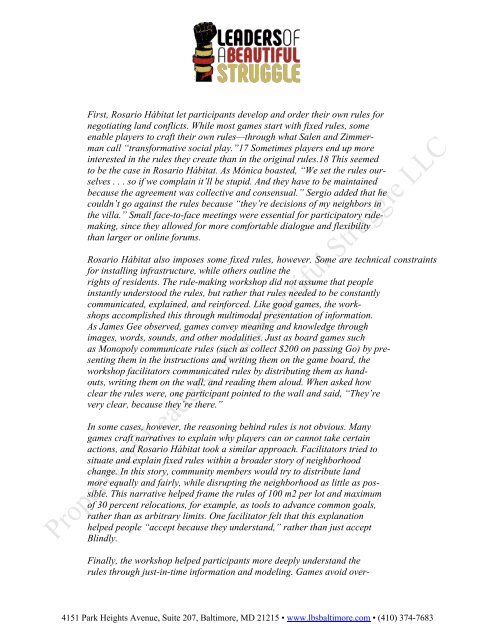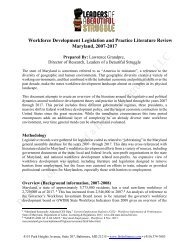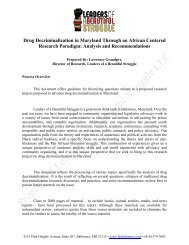Models for Participatory Budgeting
Participatory Budgeting (PB) has become a schizophrenic term, used as easily by neoliberal technocrats as it has been used by leftists seeking redistribution of wealth. As such, examining the function of any PB scheme with a critical lens is essential to determine whether it is an attempt to redistribute resources and power, or a tool to manufacture consent for the status quo and undermine/co-opt forces of resistance. While the goal of this analysis is not to delve deeply into the technical minutiae around the different processes, there is one clarification which may be useful to make at the beginning of the section. Much of what is often called PB could also be considered “participatory urban planning.” The distinction is that while budgeting denotes an explicit focus on allocating a discrete set of funds, planning seeks to take a more comprehensive survey of people's feelings, needs and problems, and generates a list of interventions based upon that feedback. Many straddle the line and include elements of both. This section will focus on processes which allocate revenue directly, will help explain why some interventions (Baltimore City Children and Youth Fund) will receive more direct attention and others (New York Cities Participatory Planning sessions) might receive less.
Participatory Budgeting (PB) has become a schizophrenic term, used as easily by neoliberal technocrats as it has been used by leftists seeking redistribution of wealth. As such, examining the function of any PB scheme with a critical lens is essential to determine whether it is an attempt to redistribute resources and power, or a tool to manufacture consent for the status quo and undermine/co-opt forces of resistance.
While the goal of this analysis is not to delve deeply into the technical minutiae around the different processes, there is one clarification which may be useful to make at the beginning of the section. Much of what is often called PB could also be considered “participatory urban planning.” The distinction is that while budgeting denotes an explicit focus on allocating a discrete set of funds, planning seeks to take a more comprehensive survey of people's feelings, needs and problems, and generates a list of interventions based upon that feedback. Many straddle the line and include elements of both. This section will focus on processes which allocate revenue directly, will help explain why some interventions (Baltimore City Children and Youth Fund) will receive more direct attention and others (New York Cities Participatory Planning sessions) might receive less.
- No tags were found...
You also want an ePaper? Increase the reach of your titles
YUMPU automatically turns print PDFs into web optimized ePapers that Google loves.
First, Rosario Hábitat let participants develop and order their own rules <strong>for</strong><br />
negotiating land conflicts. While most games start with fixed rules, some<br />
enable players to craft their own rules—through what Salen and Zimmerman<br />
call “trans<strong>for</strong>mative social play.”17 Sometimes players end up more<br />
interested in the rules they create than in the original rules.18 This seemed<br />
to be the case in Rosario Hábitat. As Mónica boasted, “We set the rules ourselves<br />
. . . so if we complain it’ll be stupid. And they have to be maintained<br />
because the agreement was collective and consensual.” Sergio added that he<br />
couldn’t go against the rules because “they’re decisions of my neighbors in<br />
the villa.” Small face-to-face meetings were essential <strong>for</strong> participatory rulemaking,<br />
since they allowed <strong>for</strong> more com<strong>for</strong>table dialogue and flexibility<br />
than larger or online <strong>for</strong>ums.<br />
Rosario Hábitat also imposes some fixed rules, however. Some are technical constraints<br />
<strong>for</strong> installing infrastructure, while others outline the<br />
rights of residents. The rule-making workshop did not assume that people<br />
instantly understood the rules, but rather that rules needed to be constantly<br />
communicated, explained, and rein<strong>for</strong>ced. Like good games, the workshops<br />
accomplished this through multimodal presentation of in<strong>for</strong>mation.<br />
As James Gee observed, games convey meaning and knowledge through<br />
images, words, sounds, and other modalities. Just as board games such<br />
as Monopoly communicate rules (such as collect $200 on passing Go) by presenting<br />
them in the instructions and writing them on the game board, the<br />
workshop facilitators communicated rules by distributing them as handouts,<br />
writing them on the wall, and reading them aloud. When asked how<br />
clear the rules were, one participant pointed to the wall and said, “They’re<br />
very clear, because they’re there.”<br />
In some cases, however, the reasoning behind rules is not obvious. Many<br />
games craft narratives to explain why players can or cannot take certain<br />
actions, and Rosario Hábitat took a similar approach. Facilitators tried to<br />
situate and explain fixed rules within a broader story of neighborhood<br />
change. In this story, community members would try to distribute land<br />
more equally and fairly, while disrupting the neighborhood as little as possible.<br />
This narrative helped frame the rules of 100 m2 per lot and maximum<br />
of 30 percent relocations, <strong>for</strong> example, as tools to advance common goals,<br />
rather than as arbitrary limits. One facilitator felt that this explanation<br />
helped people “accept because they understand,” rather than just accept<br />
Blindly.<br />
Finally, the workshop helped participants more deeply understand the<br />
rules through just-in-time in<strong>for</strong>mation and modeling. Games avoid over-<br />
4151 Park Heights Avenue, Suite 207, Baltimore, MD 21215 • www.lbsbaltimore.com • (410) 374-7683









